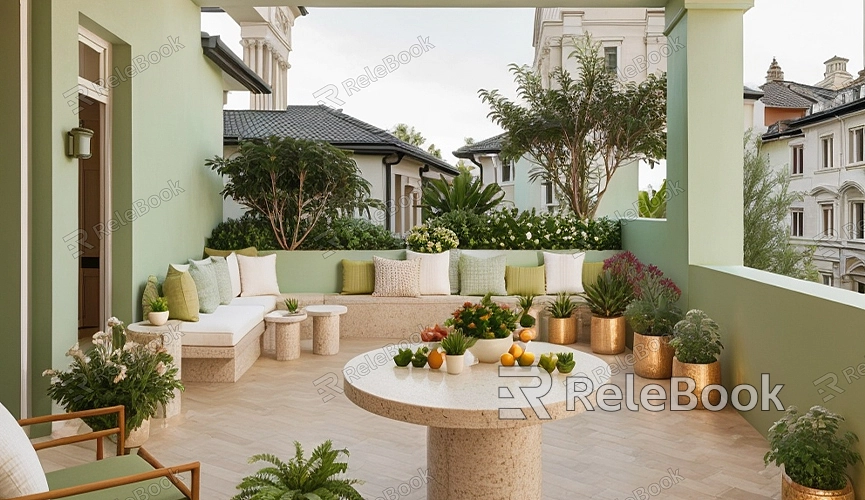How do you render a picture in blender
Blender is a powerful open-source 3D modeling and rendering software known for its rich feature set and being completely free to use. For beginners, learning how to render images in Blender is a crucial step towards 3D creation. This article will provide a detailed guide on the entire process of rendering images in Blender, covering scene setup, lighting adjustments, and final image rendering.
Step 1: Creating and Importing 3D Models
Firstly, you need a 3D model. If you already have a model, you can import it directly into Blender. Click on "File" in the top menu bar of Blender, then select "Import" and choose the appropriate format for your model, such as OBJ, FBX, etc. For those needing high-quality 3D textures, HDRI environments, or downloadable 3D models, these can be obtained from Relebook and imported directly into your scene.

If you prefer to create your own models, Blender offers built-in modeling tools. In Blender's Edit Mode, use the "Add" menu to include basic geometric shapes like cubes, spheres, etc., and then manipulate them using tools such as extrusion and scaling to build complex models.
Step 2: Scene Setup and Lighting
A well-rendered 3D image depends greatly on a carefully crafted scene and appropriate lighting. Begin by setting up the scene's background and ground. You can add a plane as the ground and apply suitable materials and textures to it. For a specific background image, utilize HDRI images within the "World" settings to achieve realistic environmental lighting effects.
Next, configure the lighting. Blender offers various types of lights such as Point, Spot, Sun, and Area lights. Depending on your scene's requirements, select the appropriate light type and adjust its position, intensity, and color. Typically, the three-point lighting technique is common: Key Light for primary illumination, Fill Light to reduce shadows, and Back Light to separate objects from the background.
Step 3: Material and Texture Setup
In 3D rendering, materials and textures significantly impact the model's appearance. In Blender, use the "Material" panel to add and adjust materials. Blender employs a node-based system for managing materials, enabling adjustments to color, reflectivity, roughness, and other properties as needed.
Textures are integral to materials. Download high-quality textures from the internet and apply them within Blender. For those requiring high-quality 3D textures and HDRI, Relebook provides suitable resources. After downloading, import textures into Blender and add an "Image Texture" node within the material nodes, selecting the corresponding texture image to achieve realistic surface effects.
Step 4: Camera Setup
Before rendering, configure the camera's perspective and parameters. Blender's camera functions similar to a real-world camera, allowing adjustments to position, rotation, focal length, etc. Select the camera object in your scene, then use translation and rotation tools to align the camera with the object you intend to render. Switch to camera view by pressing '0' in the viewport for a more intuitive adjustment of camera position.
Additionally, adjust camera parameters such as focal length and depth of field for enhanced visual effects. For instance, altering focal length changes the field of view, while setting depth of field creates a blurred background effect, enhancing the artistic appeal of the rendered image.
Step 5: Rendering Setup
Prior to final rendering, configure additional rendering settings within Blender. Open the "Render Properties" panel, choose your preferred rendering engine. Blender offers two primary engines: Eevee for real-time rendering with fast output and Cycles for ray-traced rendering, producing more realistic results at the cost of longer render times.
Once the rendering engine is selected, adjust settings such as resolution and sampling. Resolution determines the image's dimensions, while sampling affects image quality and rendering time. Generally, higher sampling reduces noise but increases rendering time.
Step 6: Initiating Rendering
With all parameters set, commence rendering. In Blender's top menu bar, select "Render" and then click on "Render Image." Blender will begin calculating and generating the final image based on your specified parameters. Rendering times vary depending on scene complexity and computer performance.
After rendering completes, view and save the rendered result using Blender's Image Editor. Click on the "Image" menu, then select "Save As" to save the rendered image to your computer.
This concludes the basic process of rendering a picture in Blender. By studying and practicing these steps, you can create high-quality 3D rendered images. For those needing extensive 3D textures, HDRI environments, or downloadable 3D models, Relebook offers convenient resources for seamless integration into your Blender projects.

